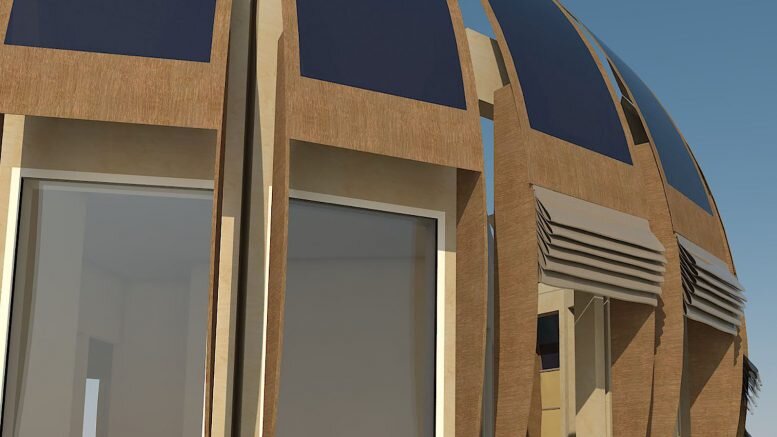Project in Morocco combines Hemp and Solar to Make Spaceship themed home

A team of organizations has completed construction of a ground-breaking eco-building in Morocco that combines hemp construction with a high-tech solar energy system for total independence from the electrical grid. Moroccan cooperative Adrar Nouh is among a group of four organizations whose joint hemp-based project aimed at safeguarding the environment and culture of the Moroccan High Rif was selected to participate in the Solar Decathlon Africa 2019 competition. The IHBA Symposium, which is hosted in a different part of the world each year, is led by veteran hemp builder Steve Allin, the Association’s Director. This year’s host and co-organizer is Wolf Jordan & Co, which is based in Brussels and Kalmthout, Belgium.
Nature meets high-tech
This ‘space-ship’ is advanced in time and reflects a turn not only in North Africa but in hemp construction, which doesn’t have comparable prototypes anywhere in the world,” said Monika Brümmer, a German architect and natural builder who led the project.
While the building was designed as a stimulus for rural development, the technology also has application in urban settings, Brümmer noted.
“This ‘spaceship’ is advanced in time and reflects a turn not only in North Africa but in hemp construction, which doesn’t have comparable prototypes anywhere in the world.”
— Monika Brümmer, German Architect and Project Leader
The SUNIMPLANT project is applying traditional architectural concepts enhanced through bioclimatic, environmentally friendly construction technologies.
This design is unique and was built from only locally sourced hemp, vegetable-based bio-resins, and other non-synthetic materials found in the region.
Built for around $120,000, the building’s price tag was less than half the cost of the most expensive buildings in the competition. Additional features of the 90 sq. m. SUNIMPLANT building include:
A double skin façade that employs a mixture of hemp, earth, pozzolan and lime, all sourced locally; and bio-composites incorporating hemp technical fibers that were produced via vacuum injection technology.
A spherical, aerodynamic outer skin comprising 24 semi-flexible photovoltaic panels. Sponsored by DAS-Energy, the panels are exposed to all faces for their use of sun and light, with maximum 40% losses.
Curved bio-composite panels made with hemp wool, which increase the performance of the photovoltaic panels by protecting their back side against the weather extremes of the semi-arid region of Ben Guerir, where temperatures reached 42°–46°C (107°– 114°F) in the shade during the construction phase last August and September.
High-performance glass from French glassmaker Saint Gobain.


